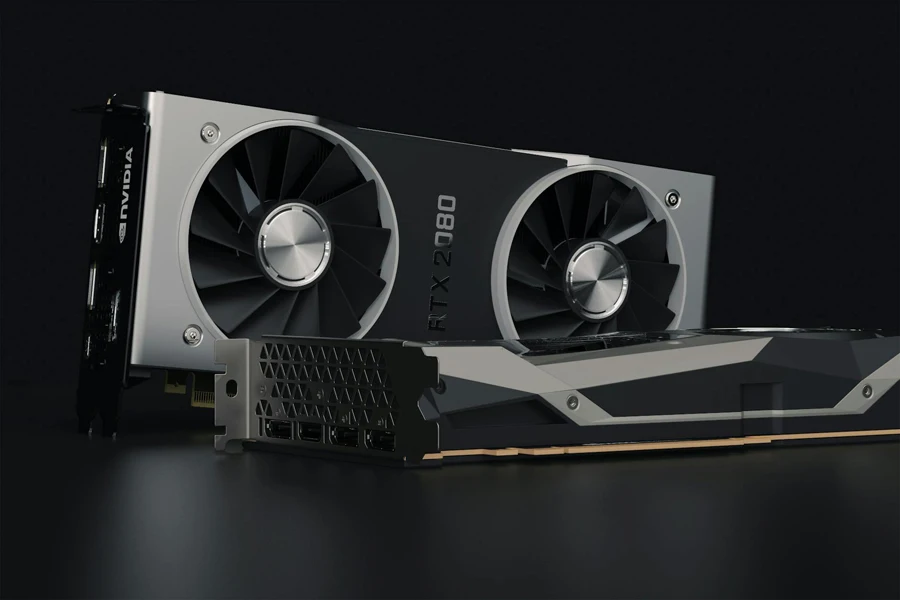Table of Contents
• Introduction
• Market overview
• Different types of blockchain mining
• Things to consider when selecting products
• Conclusion
Introduction
Blockchain mining plays a crucial role in securing and validating transactions on the blockchain network. As technology advances, miners must navigate a range of options, from CPUs to ASICs, each with distinct benefits and challenges. Selecting the right mining hardware involves balancing factors like hash rate, power consumption, and noise levels. Efficient mining setups can lead to significant profitability and operational success. Understanding these elements is key to maximizing mining efficiency in a competitive market.
Market overview

Market scale and growth
The blockchain mining market has seen significant growth, with a global market size of $7.4 billion in 2022 and projected to exceed $94 billion by 2027, reflecting a CAGR of 66.2% from 2022 to 2027. Key drivers of this growth include increasing venture capital funding and rising government initiatives. Additionally, the growing adoption of blockchain technology across various sectors, such as retail, banking, and supply chain management, is fueling this expansion. North America is the dominant region in this market, attributed to its strong economic infrastructure and the presence of major technology players.
According to industry reports, venture capital investments in blockchain technology surged to $31.3 billion by mid-2022, demonstrating the growing confidence in this sector. Government initiatives also play a crucial role, with various entities investing in blockchain research to enhance transparency and efficiency in public services. Notably, the Estonian government and China’s significant number of blockchain-related patents highlight the global efforts to integrate this technology. Europe and Asia Pacific regions are also making substantial contributions, driven by technological advancements and strategic partnerships aimed at accelerating blockchain adoption.
Different types of blockchain mining

CPU mining
CPU mining, one of the earliest methods, uses a computer’s central processing unit to perform the necessary calculations for mining. Historically, it was sufficient for early cryptocurrencies like Bitcoin, but as mining difficulty increased, CPUs could not keep up with the required computational power. Modern CPU mining remains relevant for coins like Monero, which utilizes the CryptoNight algorithm. This algorithm is designed to be ASIC-resistant, ensuring that mining can be done profitably with standard desktop CPUs. A typical CPU mining setup includes a high-performance processor, adequate cooling, and optimized mining software.
GPU mining
GPU mining leverages graphics processing units, which excel at handling the parallel processing tasks required for mining. GPUs offer significantly higher hash rates compared to CPUs due to their architecture, which allows them to process multiple operations simultaneously. A standard GPU mining rig includes several GPUs connected to a motherboard, power supply, and cooling system. GPUs like the NVIDIA GeForce RTX 3080 and AMD Radeon RX 6800 XT are popular choices, capable of achieving hash rates of 100 MH/s or more for Ethereum mining. These setups require efficient cooling solutions, as GPUs generate substantial heat during operation.
FPGA mining
Field-programmable gate array (FPGA) mining offers a middle ground between GPU and ASIC mining in terms of efficiency and flexibility. FPGAs are integrated circuits that can be programmed to perform specific mining tasks, making them adaptable to different algorithms. They offer better energy efficiency than GPUs and can be reprogrammed to switch between mining different cryptocurrencies. A typical FPGA miner, such as the Xilinx VU9P, provides a balance of performance and energy consumption, achieving hash rates up to 3 GH/s for algorithms like X11. These devices require advanced technical knowledge to program and optimize, limiting their use to more experienced miners.
ASIC mining
Application-specific integrated circuit (ASIC) mining uses hardware specifically designed for a single mining algorithm, offering the highest performance and energy efficiency. ASIC miners, like the Antminer S19 Pro and S19 XP, are tailored for SHA-256, the algorithm used by Bitcoin. These miners achieve hash rates of up to 141 TH/s with power consumption around 3,250W. Their specialized nature means they cannot be repurposed for other algorithms, but their efficiency makes them the most profitable option for large-scale mining operations. ASIC miners require significant upfront investment and generate considerable heat, necessitating robust cooling solutions and stable power supplies.
Cloud mining
Cloud mining allows users to rent mining power from remote data centers, eliminating the need for physical hardware. This method involves selecting a mining contract, specifying the desired amount of hashing power and contract duration. Providers manage the maintenance, operation, and electricity costs, while users receive the mined cryptocurrency minus fees. Cloud mining platforms offer various plans, such as hash rate tiers and contract lengths, allowing flexibility based on investment size. Users must consider the risks, including potential service reliability issues and fluctuating mining profitability, but cloud mining remains an accessible entry point for those who want to avoid the complexities of hardware setup and maintenance.
Things to consider when selecting products

Hash rate
The hash rate is a crucial factor in determining mining efficiency. It represents the number of calculations a miner can perform per second. Higher hash rates increase the likelihood of solving cryptographic puzzles and earning rewards. When comparing different miners, evaluating their hash rates is essential. For instance, ASIC miners like the Antminer S19 Pro offer hash rates of up to 110 TH/s, significantly outperforming GPU and CPU miners. Higher hash rates typically correlate with better mining performance, but they also come with increased power consumption and initial costs.
Power consumption
Power consumption directly impacts the profitability of mining operations, as electricity costs are a major expense. Efficient miners balance high hash rates with low power usage. For example, the Antminer S19 XP consumes approximately 3,032W while delivering a hash rate of 141 TH/s, making it one of the most energy-efficient miners available. Strategies to optimize energy efficiency include using renewable energy sources, undervolting mining hardware, and employing advanced cooling systems to reduce the need for excessive air conditioning.
Noise level
Noise level is a significant consideration, especially for home mining environments. High-performance miners can generate substantial noise due to cooling fans and high-speed operations. Miners operating in residential settings should prioritize devices with lower decibel ratings. Solutions for noise reduction include using quieter fans, placing miners in soundproof enclosures, and situating mining rigs in isolated areas of the home. Models like the Antminer S9 Space Heater Edition incorporate silent fans to minimize noise, making them more suitable for home use.
Initial cost and ROI
The initial cost of mining equipment can be substantial, and calculating the return on investment (ROI) is essential for assessing long-term profitability. ROI depends on various factors, including the miner’s hash rate, power consumption, and the current market value of the mined cryptocurrency. For example, the high upfront cost of ASIC miners is offset by their superior performance and efficiency. Balancing upfront costs with long-term profitability involves considering the equipment’s lifespan, maintenance requirements, and potential fluctuations in cryptocurrency prices. Using online mining calculators can help estimate potential earnings and the time required to break even.
Conclusion

Selecting the right blockchain miner requires a thorough understanding of market trends, various types of miners, and key selection criteria. Evaluating factors such as hash rate, power consumption, noise level, and initial cost is essential for optimizing mining efficiency and profitability. By making informed decisions based on these criteria, miners can enhance their operations and achieve significant returns in the competitive and evolving landscape of blockchain mining.








